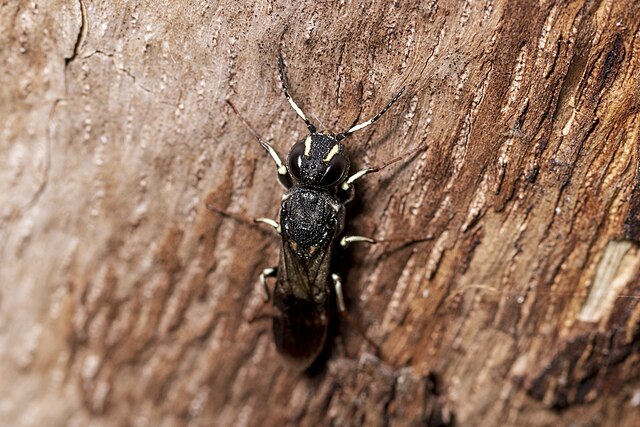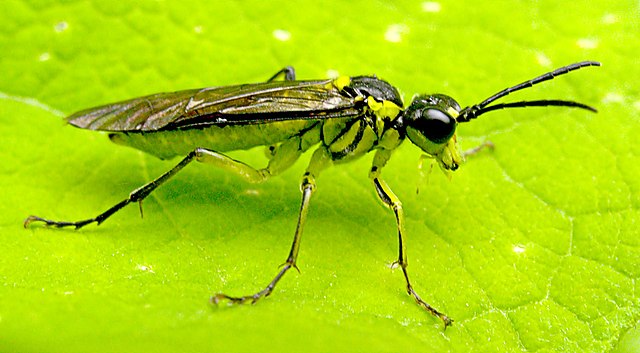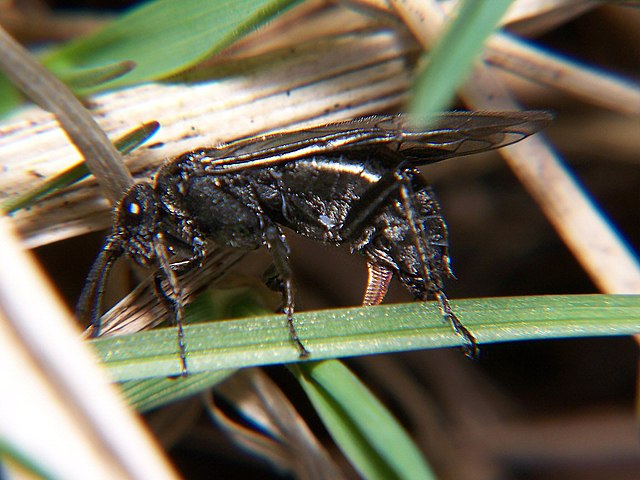The Orussidae or the parasitic wood wasps represent a small family of sawflies ("Symphyta"). Currently, about 93 extant and four fossil species are known. They take a key position in phylogenetic analyses of Hymenoptera, because they form the sister taxon of the megadiverse apocritan wasps, and the common ancestor of Orussidae + Apocrita evolved parasitism for the first time in course of the evolution of the Hymenoptera. They are also the only sawflies with carnivorous larvae.
Image: Orussus abietinus (Hymenoptera Orussidae) a parasitic wood wasp ! (10136426163) (cropped)
Image: Orussus coronatus
Orussus abietinus; Narew river near Pułtusk, Poland
Sawflies are wasp-like insects that are in the suborder Symphyta within the order Hymenoptera, alongside ants, bees, and wasps. The common name comes from the saw-like appearance of the ovipositor, which the females use to cut into the plants where they lay their eggs. The name is associated especially with the Tenthredinoidea, by far the largest superfamily in the suborder, with about 7,000 known species; in the entire suborder, there are 8,000 described species in more than 800 genera. Symphyta is paraphyletic, consisting of several basal groups within the order Hymenoptera, each one rooted inside the previous group, ending with the Apocrita which are not sawflies.
Sawfly
Larvae of Nematus miliaris
Sawfly laying eggs in a plant, using the serrated saw-like ovipositor for which the group is named
Anaxyeloidea: Syntexis libocedrii







